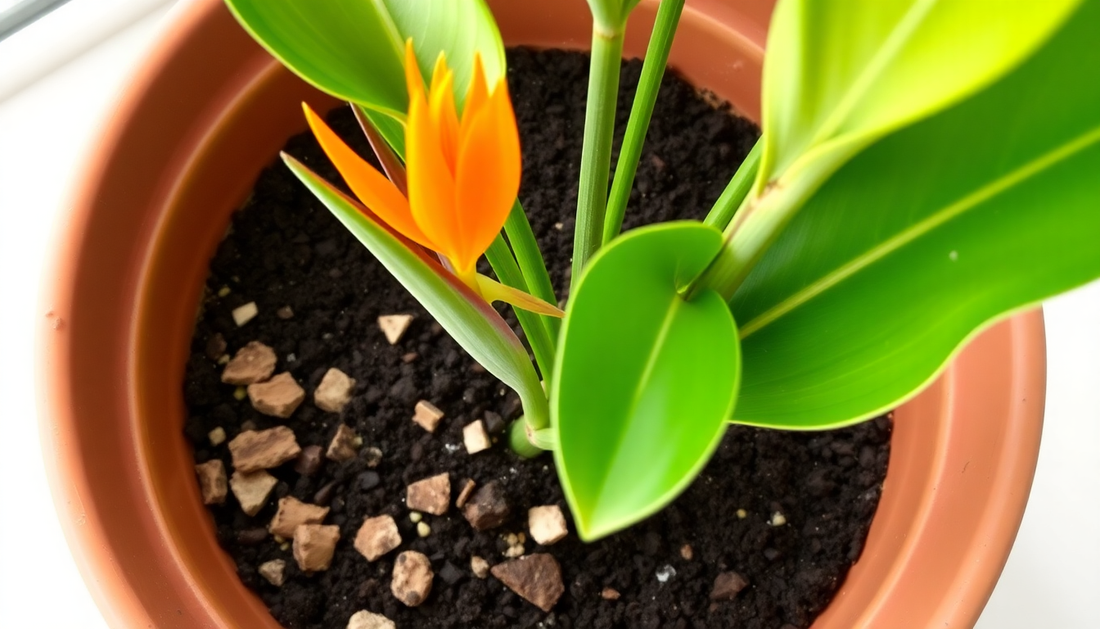
The Perfect Soil Mix for Your Bird of Paradise Plant
As a passionate gardener, I've always been fascinated by the majestic Bird of Paradise plant. With its vibrant orange and blue blooms and lush, tropical foliage, it's no wonder this plant has become a beloved addition to many gardens and homes. However, growing a healthy and thriving Bird of Paradise requires more than just sunlight and water - the right soil mix is crucial for its success.
In this comprehensive guide, I'll share my expertise on creating the perfect soil mix for your Bird of Paradise plant, ensuring it reaches its full potential and brings a touch of the tropics to your space.
Understanding the Needs of the Bird of Paradise
The Bird of Paradise, scientifically known as Strelitzia reginae, is a native of South Africa and thrives in warm, humid climates. This plant is known for its large, paddle-shaped leaves and its distinctive flower that resembles a bird in flight. To ensure your Bird of Paradise plant flourishes, it's essential to provide it with the right growing conditions, starting with the soil.
Soil Composition
Bird of Paradise plants prefer a well-draining, nutrient-rich soil that retains moisture but doesn't become waterlogged. The ideal soil mix should have the following characteristics:
- Excellent Drainage: The soil must allow excess water to drain away quickly, preventing root rot and other moisture-related issues.
- High Organic Matter Content: Bird of Paradise plants thrive in soil that is rich in organic matter, such as compost or well-rotted manure, which provides essential nutrients and improves soil structure.
- Slightly Acidic pH: The optimal pH range for Bird of Paradise plants is between 5.5 and 6.5, which helps the plant absorb nutrients more efficiently.
- Aeration: The soil should be loose and well-aerated, allowing the plant's roots to easily penetrate and access the necessary air and water.
Nutrient Requirements
Bird of Paradise plants are heavy feeders and require a consistent supply of nutrients to support their rapid growth and large foliage. The ideal soil mix should be rich in the following essential nutrients:
- Nitrogen (N): Nitrogen promotes lush, green foliage growth.
- Phosphorus (P): Phosphorus supports root development and flowering.
- Potassium (K): Potassium helps the plant withstand environmental stresses and promotes overall plant health.
- Micronutrients: Trace elements like iron, magnesium, and calcium are also important for the plant's well-being.
Creating the Perfect Soil Mix for Bird of Paradise
Now that we've explored the specific soil requirements of the Bird of Paradise, let's dive into the step-by-step process of creating the perfect soil mix for your plant.
Ingredients
To make the ideal soil mix for your Bird of Paradise, you'll need the following ingredients:
- Potting Soil: Choose a high-quality, well-draining potting soil as the base for your mix.
- Compost: Incorporate a generous amount of nutrient-rich compost to provide organic matter and improve soil structure.
- Perlite or Vermiculite: Add these lightweight, porous materials to enhance drainage and aeration.
- Peat Moss or Coco Coir: Include a small amount of these moisture-retaining materials to help the soil hold water without becoming waterlogged.
- Slow-Release Fertilizer: Incorporate a slow-release, balanced fertilizer to ensure a steady supply of essential nutrients for your plant.
Mixing the Soil
- Start by mixing the potting soil and compost in a large container or on a clean surface. Aim for a ratio of 2 parts potting soil to 1 part compost.
- Add 1 part perlite or vermiculite to the soil-compost mixture and mix thoroughly.
- Incorporate a small amount, around 1 part, of peat moss or coco coir to the mix. This will help retain moisture without compromising drainage.
- Finally, mix in a slow-release, balanced fertilizer according to the manufacturer's instructions.
- Thoroughly blend all the ingredients until you have a uniform, well-aerated soil mix.
Preparing the Planting Area
- If planting your Bird of Paradise directly in the ground, ensure the soil in the planting area is well-draining and amend it with your homemade soil mix.
- For container-grown Bird of Paradise plants, choose a pot or planter that is at least 18 inches deep and has ample drainage holes.
- Fill the container with your custom soil mix, leaving enough space at the top for the plant's root ball.
Maintaining the Soil Mix
Proper soil maintenance is crucial for the long-term health and success of your Bird of Paradise plant. Here are some tips to keep your soil mix in optimal condition:
- Replenish Nutrients: Every 6-12 months, top-dress the soil with a fresh layer of compost or apply a slow-release fertilizer to replenish nutrients.
- Monitor Moisture: Check the soil regularly and water when the top 2-3 inches become dry. Avoid letting the soil become waterlogged.
- Aerate the Soil: Periodically use a garden fork or cultivator to gently loosen the soil and improve aeration.
- Adjust pH: If the soil becomes too acidic or alkaline, you can adjust the pH by adding lime (to increase pH) or sulfur (to decrease pH).
- Replace Soil: Every 2-3 years, consider replacing the entire soil mix to ensure optimal nutrient levels and soil structure.
By following these guidelines and creating the perfect soil mix, you'll be well on your way to growing a thriving, lush Bird of Paradise plant that will bring a touch of the tropics to your garden or indoor space. Happy gardening!







No comments